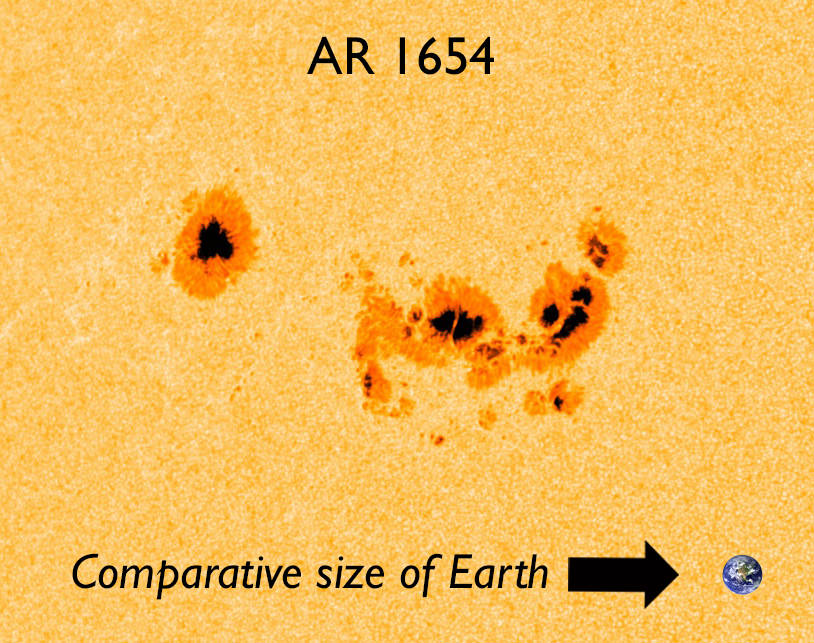Active Region 1654 on the Sun’s western limb, seen by SDO on Jan. 11 (NASA/SDO/HMI team. Diagram by J. Major.)
Like an enormous cannon that is slowly turning its barrel toward us, the latest giant sunspot region AR1654 is steadily moving into position to face Earth, loaded with plenty of magnetic energy to create M-class flares — moderate-sized outbursts of solar energy that have the potential to cause brief radio blackouts on Earth and, at the very least, spark bright aurorae around the upper latitudes.
According to SpaceWeather.com, AR1654 “could be the sunspot that breaks the recent lengthy spell of calm space weather around our planet.”
The image above, captured by NASA’s Solar Dynamics Observatory earlier today, shows the structure of AR1654 upon the Sun’s photosphere — its light-emitting “surface” layer. Stretching many tens of thousands of miles, this magnetic solar blemish easily dwarfs our entire planet. And it’s not just a prediction that this sunspot will unleash a flare — it already has.
AR1654 came around the limb of the sun crackling with activity. Shortly after the probability of AR1654 releasing a flare was raised to 50% it did just that, letting loose with a burst of magnetic energy that was observed by SDO’s multi-channel cameras. Watch the video below:
Peaking at 9:11 UTC, this M1-class flare won’t have much more effect on Earth than perhaps some radio and GPS interference and maybe increased auroral activity. But AR1654 is still evolving and growing… and moving to face us.
In the meantime, solar astronomers and observatories like SDO are keeping an ever-watchful eye on this magnetic monster.
Keep up with the latest news here on Universe Today, on the SDO mission site and on spaceweather.com.
UPDATE 1/12: According to the NOAA, AR1654 has a 5% chance of producing an X-class flare, based on its current magnetic activity and alignment.
A sunspot is a magnetically active region on the sun that appears dark because it’s relatively cooler than the surrounding area—6,000ºF (3,300ºC) versus 10,000ºF (5,500º C). Sunspots are where solar flares are most likely to occur since the magnetic fields in these active regions can build up enough energy to break, releasing bursts of intense radiation into the solar system.


Am I the only one here that feels a faint joy that, once more, the “End of the world” is nigh? 😛
The eucalyptus is nigh! :-p
Nah,, Just line yer baseball cap with tin foil.
Come on Carrington event for 2013.